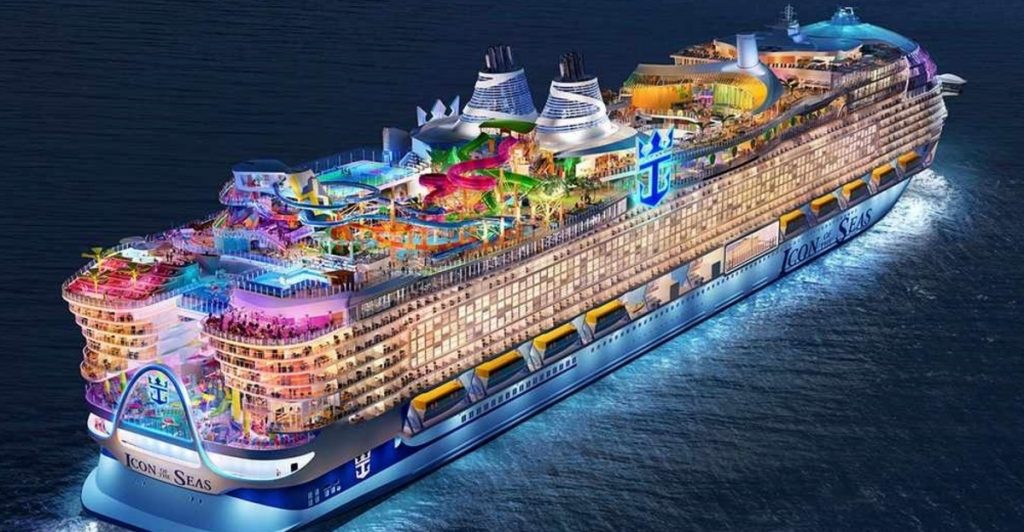Cruising goes cleaner
Five times larger than the Titanic, the Icon of the Seas is the world’s largest cruise ship.
The cruising behemoth recently set out on its maiden voyage, fuelled by liquefied natural gas (LNG).
Featuring 19 floors, 20 decks, seven pools, six waterslides and rooms for nearly 8000 passengers and crew, the Icon of the Seas spans 365 metres from tail to tip.
That’s just about the height of the Empire State Building.

Accompanying the seven pools are nine whirlpools, an ice arena, surf simulator, bowling alley, casino, and much more.
And if the huge list of on-board activities makes you feel overwhelmed, don’t despair.
There are 40 bars and restaurants to decompress and relax as you explore the ship’s eight neighbourhoods, while the captain and crew navigate from the neon glitz of Miami to the azure waters of the Caribbean.
Why not take a tour?
The Icon of the Seas is about size and grandeur, but it also represents significant innovation and a step towards sustainability.
Traditionally, cruise ships have relied on diesel. The monolithic Icon of the Seas, however, is charting a new course by using LNG, a choice that reflects a commitment to reducing emissions and moving towards a cleaner future.
The ship’s owner, Royal Caribbean, says the Icon of the Seas is 24 per cent more energy efficient than required by the International Maritime Organization for modern ships.
The company also plans to introduce a net zero ship by 2035.
The switch to LNG is a big deal. Natural gas is cleaner compared to traditional marine fuels, reducing carbon footprints, and helping fight climate change.
The biggest boat, with a cleaner motor. Would you climb aboard? There’s plenty of room!
Explore
with Natural Gas Subscribe


